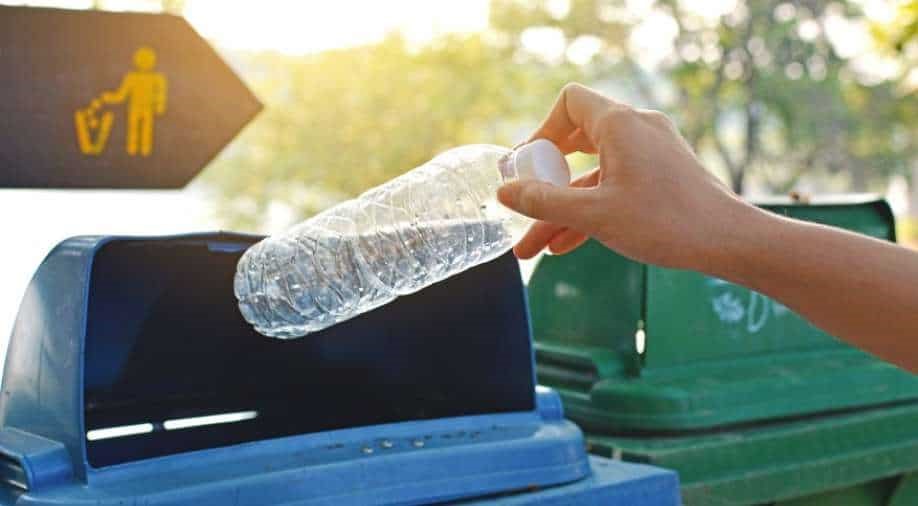
Disclaimer: Copyright infringement not intended.
Context
- Japanese scientists have recently developed an innovative version of plastic that surpasses traditional variants in strength and flexibility.
- This groundbreaking plastic also exhibits partial biodegradability and the remarkable ability to retain complex shapes, which can be restored through controlled heating.
Details
- In the global pursuit for eco-friendly alternatives to conventional plastics, the University of Tokyo researchers have successfully crafted a sustainable plastic based on an epoxy resin vitrimer.
- This novel plastic variant, known as VPR (vitrimer incorporated with polyrotaxane), integrates the polyrotaxane molecule into the synthesis process, addressing the brittleness associated with vitrimers.
Unique Features and Characteristics
- Shape Memory Properties: VPR retains a rigid structure at lower temperatures due to robust internal chemical bonds, while it can adapt to various shapes at higher temperatures, approximately 150 degrees Celsius.
- Biodegradability: VPR demonstrates promising biodegradability, with a 25% breakdown in seawater over 30 days. The constituent polyrotaxane serves as a potential food source for marine life.
- Self-Healing Abilities: This innovative plastic exhibits impressive self-healing capabilities, recovering 15 times faster than typical epoxy resin vitrimers.
Introduction to Biodegradable Plastics
- Biodegradable plastics are a type of plastic material that can undergo decomposition through the action of living organisms, such as bacteria or other natural processes, into natural elements, such as water, carbon dioxide, and biomass.
- These plastics offer a promising solution to the global plastic waste crisis, as they minimize environmental pollution and reduce the accumulation of non-degradable plastic waste in landfills and oceans.
.jpg)
Types of Biodegradable Plastics
Bio-based Plastics
- Derived from renewable biomass sources such as corn starch, sugarcane, or cellulose, these plastics are capable of decomposing into natural elements under specific conditions, reducing the reliance on fossil fuels.
Synthetic Biodegradable Plastics
- These plastics are chemically designed to degrade under specific environmental conditions, such as exposure to sunlight, heat, moisture, or microbial activity, facilitating their breakdown into harmless substances.
Starch-based Plastics
- Starch-based biodegradable plastics, derived from crops such as corn, wheat, or potatoes, are among the most common types.
- These plastics are composed of a blend of thermoplastic starch and other biodegradable polymers, offering versatile applications in packaging and disposable items.
Polylactic Acid (PLA)
- Polylactic acid, a bio-based polymer produced from renewable resources such as corn starch or sugarcane, is biodegradable under industrial composting conditions.
- PLA is widely used in various applications, including packaging materials, disposable tableware, and 3D printing.
Polyhydroxyalkanoates (PHA)
- Polyhydroxyalkanoates are a group of biodegradable polymers synthesized by microorganisms through the fermentation of organic materials.
- These versatile plastics offer properties similar to traditional polyethylene and find applications in packaging, medical devices, and the production of biodegradable bags.
Polybutylene Succinate (PBS)
- Polybutylene succinate is a bio-based and biodegradable polyester produced from succinic acid and 1,4-butanediol.
- PBS is commonly used in the production of compostable packaging materials, disposable tableware, and agricultural films, offering good thermal and mechanical properties.
Polyhydroxybutyrate (PHB)
- Polyhydroxybutyrate is a biodegradable thermoplastic polyester produced by microorganisms from renewable carbon sources.
- PHB exhibits properties similar to traditional polypropylene and is used in various applications, including packaging, disposable items, and biomedical devices.
Polyethylene Oxide (PEO)
- Polyethylene oxide is a water-soluble, biodegradable polymer known for its excellent film-forming and thickening properties.
- It is used in various industrial and biomedical applications, including water treatment, controlled-release drug delivery systems, and the production of biodegradable packaging materials.
Copolyester (PBSA)
- Copolyester, also known as polybutylene succinate adipate, is a biodegradable polymer composed of succinic acid, adipic acid, and 1,4-butanediol.
- PBSA offers improved flexibility and impact resistance and is commonly used in the production of compostable packaging films and disposable items.
Benefits of Biodegradable Plastics
- Environmental Impact: Biodegradable plastics reduce the environmental burden caused by conventional plastics, minimizing soil and water pollution and mitigating the negative impact on marine life.
- Waste Reduction: Their ability to decompose into harmless elements ensures a reduction in the accumulation of non-biodegradable plastic waste in landfills, promoting sustainable waste management practices.
- Resource Conservation: The use of renewable biomass sources for bio-based plastics contributes to the conservation of fossil fuel resources and supports the transition to a more sustainable and circular economy.
Challenges and Considerations
- Limited Durability: Biodegradable plastics may have reduced durability and shelf life compared to conventional plastics, necessitating careful consideration of their appropriate applications and usage.
- Industrial Infrastructure: The effective management and disposal of biodegradable plastics require appropriate waste management infrastructure and facilities capable of facilitating their decomposition in controlled environments.
- Consumer Awareness: Raising awareness among consumers about the proper use, disposal, and composting requirements of biodegradable plastics is crucial to maximize their environmental benefits and minimize contamination.
Current Applications and Future Prospects
- Packaging Industry: Biodegradable plastics find extensive applications in the packaging industry, including single-use bags, food containers, and compostable packaging materials.
- Agricultural Sector: These plastics are used in agricultural applications, such as mulch films and plant pots, promoting environmentally friendly practices and sustainable farming methods.
- Ongoing Research: Continued research and development aim to enhance the durability, mechanical properties, and cost-effectiveness of biodegradable plastics, expanding their potential applications and promoting their widespread adoption across various industries.

Conclusion
Further research and development in the field of plastic engineering, especially in the integration of innovative materials like polyrotaxane, are expected to pave the way for the widespread adoption of sustainable and eco-friendly plastic solutions. The advancements made by Japanese scientists signal a positive direction for the future of plastic production, aligning with the global endeavor to mitigate the environmental impact of plastic waste.
|
PRACTICE QUESTION
Q. Discuss the significance of vitrimers in the development of sustainable and adaptable plastic materials. Examine the key properties and potential applications of vitrimers in addressing the challenges of conventional plastics. (250 Words)
|




